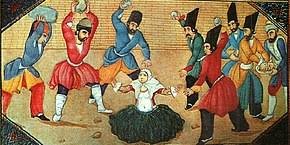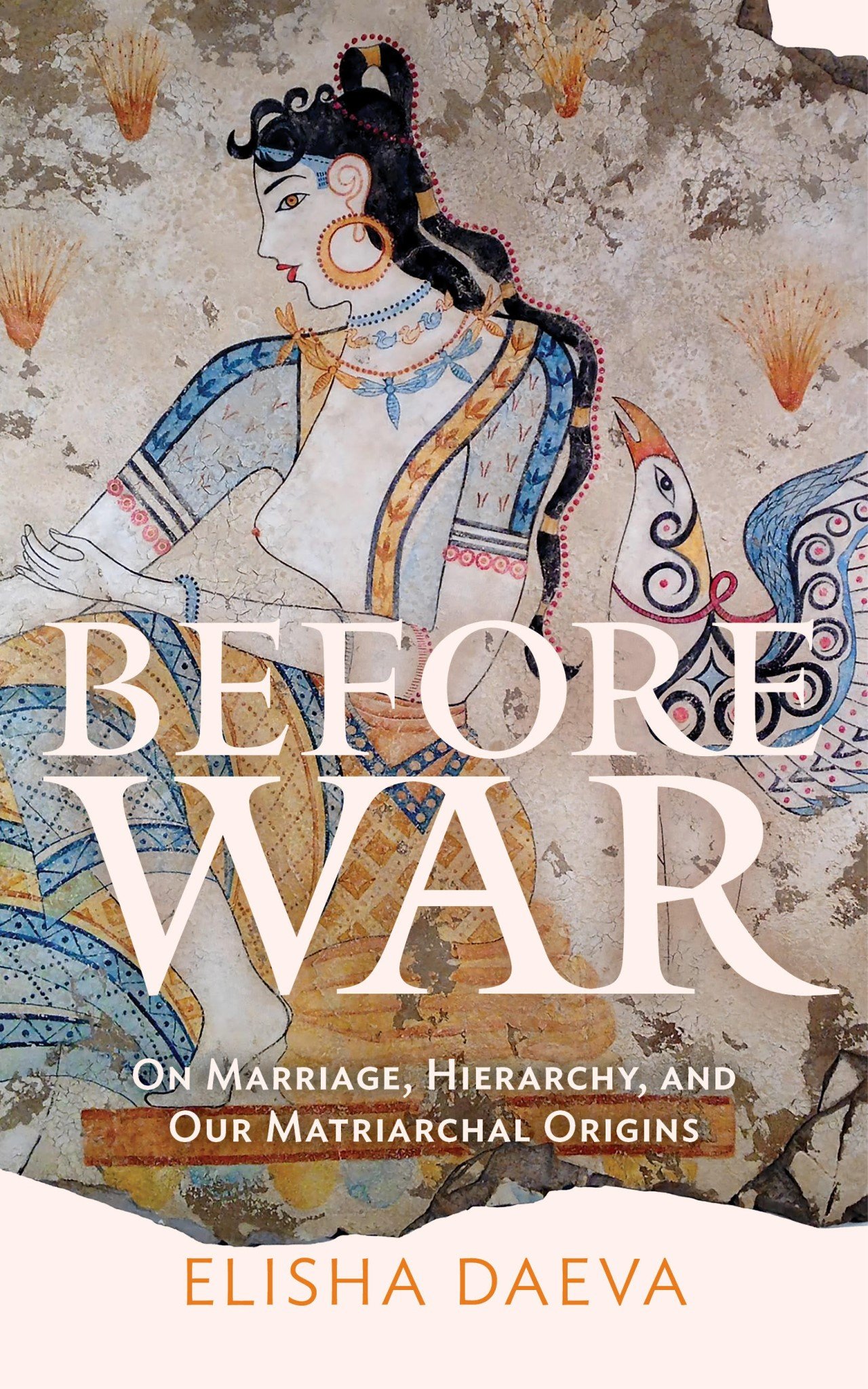TIMELINE OF WOMAN’s HISTORY
TIMELINE OF WOMAN’s HISTORY
WOMAN’s HISTORY, 250,000—4000 BCE
Goddess likely venerated as “Source of All Life” by humans worldwide …
250,000 BCE:
Acheulian Goddess carved (found in the Golan Heights in the 80's)
40,000 (or more)-10,000 BCE:
Matriarchies, female shamans and priestesses, Goddess images in bas relief in caves; statues and burials with red ochre, symbolic of menstrual blood
9000-3500 BCE:
Women invent agriculture, weaving and pottery. Beginning of Old Europe, agricultural trading route of Goddess-venerating, egalitarian cultures in all of Western Eurasia, and western India. They develop writing, complex buildings, advanced pottery, and copper work. (See archaeologist Marija Gimbutas and her works.)
3600 BCE:
— Ggantija Temple (“Ggantisja” means “Giantess”) —
megalithic goddess complex on Gozo, Malta in the Mediterranean
Taking Hold: the Dishonoring of Goddess by Men Envious of Woman’s Power …
4000 BCE:
At this point in history, Goddess is still very much known and honored, but, the malecentric dominator model of patriarchy (“rule of the father”) begins to rise in power; Goddess begins, at different times and in different places around the world, to be deliberately demoted in status in the minds of men (but not in the hearts of women) and women everywhere begin to be degraded, demonized, objectified, bought and sold, and removed from power.
3500 BCE:
Indo-European invasion begins in Anatolia and the Danube. The male genome of Western Eurasia is eradicated quickly; indigenous males are replaced by Indo-European overlords. Villages rebuilt or abandoned. Hybrid cultures between Indo-European overlords and Old European women begin. Crafts become more primitive.
c. 4-3000 BCE:
Nile Bird Goddess of Egypt —face of a bird, arms upstretched in epiphany
c. 3200 BC:
Uruk, desecration and destruction of Eanna Sanctuary to Goddess Ishtar; replaced with gated communities and ziggurats. Uruk becomes the first patriarchal state.
c. 3100 BCE:
Start of Minoan civilization. Minoan Crete and eastern Mediterranean are a last holdout matriarchy, along with Libya, and western and southern Anatolian coasts.
c. 2350 BC:
Akkadian influence in Mesopotamia causes decline in female independence and freedom. King Urukagina passes a law saying women who take two husbands will be stoned, and if a woman speaks disrespectfully to a man, her mouth will be crushed with a fired brick.
c. 2300 BCE:
Enheduanna, first known poet and priestess, authored the oldest surviving religious text, a hymn honoring the Sumerian goddess, Innana.
2000 BCE:
Sekhmet (“Mighty One”) honored as major Egyptian goddess
1750 BC:
Indo-European Hittites establish first patriarchal empire in Anatolia.
1750 BC:
The law code Code of Hammurabi in Mesopotamia makes life more miserable for women; it formalized ba’al marriage (men are allowed to divorce for any reason but adultery for women became punishable by death). The earlier matrifocal form of marriage was known in the Middle East and Mesopotamia as “beena” marriage: the woman had her own house or tent, and could divorce as she pleased. Rape became a property crime against a woman’s father or husband. If she could not prove that she resisted by shouting, she would be punished for adultery by having her breasts, nose and ears sliced off.
c. 1650 BC:
Hittite king Hattusili I challenged matrilineal succession of the king by appointing his grandson over his son.
c. 1600 BC:
Myceneans become overlords over Minoan Crete.
c. 1370 BCE:
Queen Nefertiti reigns
c. 1380 BC:
Hittite king Suppiluluimas I appoints his wife as Tawanna (queen/priestess) and makes it purely ceremonial. Female power now linked to association with powerful male, and women begin to be traded in marriage deals.
c. 1300 BCE:
First lawsuit to be argued publicly — by Eritha, Mycenaen Priestess of Goddess “Potnia,” over a dispute about taxes on land.
BC:
BC Wars between the incipient patriarchy and conservative matriarchy bring down most empires of Western Asia. Warrior women from the Matriarchal strongholds, collectively known as the Sea Peoples, take revenge. Greece, Anatolia, and much of Egypt and Mesopotamia enter a dark age.
c. 1000 BC:
Women barred from education in Mesopotamia. Women divided into respectable and whore, and forced to be veiled or unveiled accordingly.
c. 1000 BC:
Central Asian nomad influence turn the Levant more patriarchal and puritanical. Arabic invasion of India.
c. 750 BC:
Greece emerges from the Dark Age and classical Athens rises to prominence. Patriarchy is firmly established, women were confined to the home and not part of society. Spartan women still maintained matrilineal inheritance, sexual freedom, and some independence.
c. 700 BC:
Etruscans succumb to patriarchy.
c. 325 BC:
The Council of Nicea edited the Bible, removing references to the divine feminine, reincarnation, and ancient mystical teachings. Christianity was now the official religion of patriarchy, and wherever it spread, sacred groves were burned, and women lost what rights they had retained.
30 BC:
Roman invasion of Egypt puts an end to matrilineal secession to the throne.
c. 325 BC:
30 BC Roman invasion of Egypt puts an end to matrilineal secession to the throne.
c. 50 AD:
Paul the Apostle declares women can no longer teach in the new Christian church. Gnostics with female preachers become heretics.
c. 6th:
Century Kali
c. 610 AD:
The start of Islam, which put an end to womens’ rights and tried to eradicate the ancient Arabic goddesses like Al’Ulla and Allat.
c. 600-1600 AD:
The bleak Middle Ages, a low point for women’s rights and sexual rights.
QUEEN ELIZABETH
Christine de Pizan
c.1150
Resurgence of feminine values in the court of Eleanor of Aquitaine.
1542
Start of the Inquisitions. No woman was ever declared innocent.
c. 1550
Renaissance period, a peaceful era in which upper class women obtained a bit more freedom and access to education. Many women ruled in this era: Queen Elizabeth I, Mary Queen of Scots, Mary Tudor, Isabella of Castile in Spain.
c. 1492
Beginning of colonization and rape of America.
c. 1850
Victorian era, with repressive sexual morality and sex through a hole in the sheet.
c. 1492
Beginning of colonization and rape of America.
1920’s:
A resurgence of feminine values: flapper dresses, the can can, and votes for women.
1929-1969
Crash of the stock market ushers in an era of authoritarianism and “traditional” (ie patriarchal) values. Father knows best.
1969-1980:
Permissive era of feminine values. 2nd wave feminism changes society. Women gain reproductive rights and get their own credit cards.
1980-1990
Reagan years see a backlash against feminism.
1990-2001:
Golden Age of feminism and goddess worship.
Enheduanna, high priestess of Inanna (c. 23rd century BCE)
“EXALTATION of INANNA” 60-65 “Great queen of queens, issue of a holy womb for righteous divine powers, greater than your own mother, wise and sage, lady of all the foreign lands, life-force of the teeming people: I will recite your holy song! True goddess fit for divine powers, your splendid utterances are magnificent. Deep-hearted, good woman with a radiant heart, I will enumerate your divine powers (2 mss. have instead: good divine powers) (1 ms. has instead: holy divine powers) for you!”
Thanks and great gratitude to primary creator/contributor: Elisha Daeva, author: www.beforewar.com
Elisha is an interdisciplinary thinker researching social inequality for almost thirty years. Her degree is in Human Biology from Stanford, a multidisciplinary combination of anthropology, psychology and biology. After working for four years in neuroscience at UCLA, the politics and sexism drove her out of academia. Following her change, she has painstakingly collected data across disciplines to interpret it for the public, reading every book, article, and paper she could find on the rise of dominance in the Bronze Age. She’s travelled the world, visiting matrilineal cultures and searching museums for clues to our ancient past.
We at The Museum of Woman are indebted to her for the majority of this summary of woman’s history. Thank you!
left: Acheulian Goddess, maybe oldest Goddess image known—possibly 250,000;
middle: Earth Mother of Willendorf, Austria, circa 25,000 BCE;
right: Goddess of Laussel, France, cave relief, circa 25,000 BCE
A small portion of the front of Inanna's temple from Uruk (in Vorderasiatisches Museum Berlin)
E-AN NA “House of Heavens” (Sumerian: 𒂍𒀭𒈾), also: the Temple of Inanna—considered the "residence" of Inanna, it is mentioned throughout the Epic of Gilgamesh and various other texts













